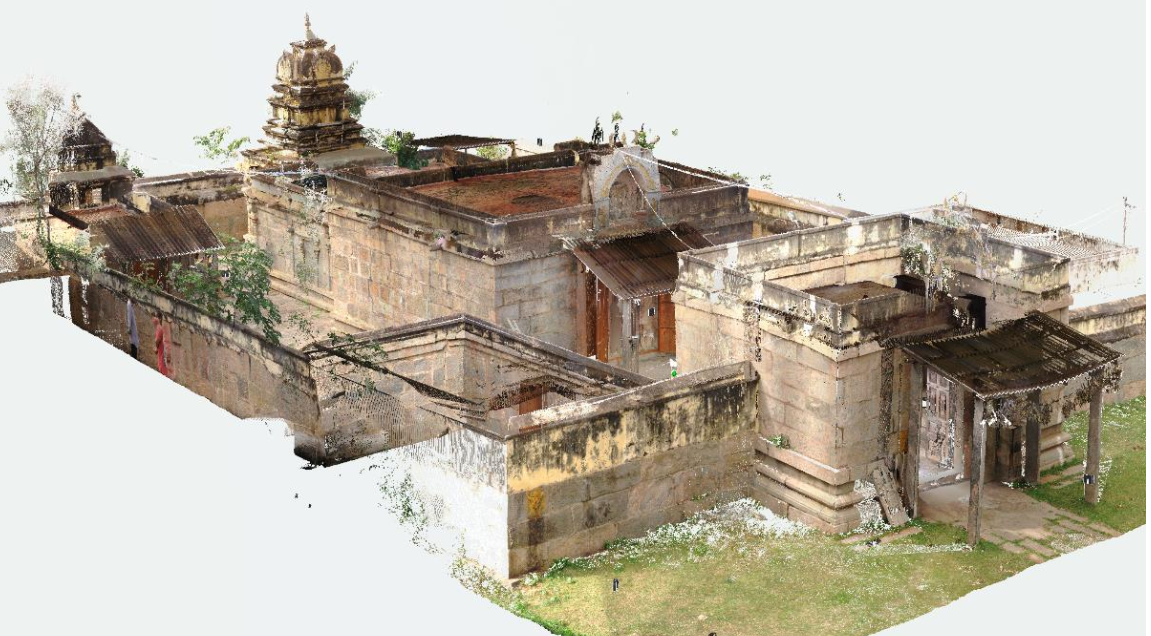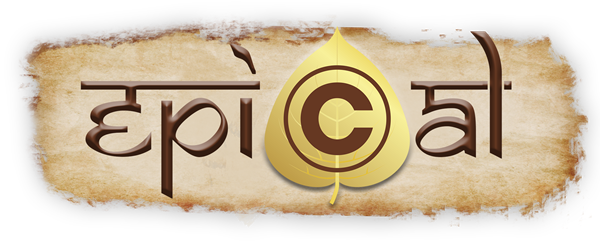Our Projects

In 2023, the Government of Karnataka took a significant step towards preserving its rich cultural heritage by appointing the Culkey Foundation as the ‘Project Management Unit’ for the Namma Smaraka initiative. This initiative is spearheaded by the Department of Archaeology, Museums, and Heritage, reflecting the government’s commitment to maintaining and enhancing the state’s historical monuments.
The primary objective of this collaboration is to facilitate the adoption of monuments across Karnataka. The Culkey Foundation will play a pivotal role in guiding individuals, organizations, and communities who wish to adopt these heritage sites. By leveraging Environmental, Social, and Governance (ESG) benchmarks, the foundation aims to ensure that the preservation efforts are not only effective but also sustainable and ethically sound. This involves implementing practices that respect and enhance the environmental and social fabric of the localities while ensuring robust governance structures are in place for accountability and transparency.
Moreover, the Namma Smaraka initiative is designed to foster community engagement through a local-first approach. This strategy emphasizes the involvement of local communities in the preservation process, recognizing their intrinsic connection to the heritage sites. By engaging locals, the initiative aims to instill a sense of ownership and pride among community members, which is crucial for the long-term sustainability of these preservation efforts. The local-first approach ensures that the preservation activities are tailored to the unique needs and characteristics of each community, thereby enhancing their effectiveness and acceptance.
The overall vision of the Namma Smaraka initiative, under the guidance of the Culkey Foundation, is to create a model of heritage preservation that is self-sustaining. By building strong community ties and utilizing ESG benchmarks, the initiative aspires to create a legacy of preserved monuments that future generations can cherish and learn from. This comprehensive approach not only protects Karnataka’s historical treasures but also promotes cultural tourism, education, and economic development within local communities.
Our Contribution
20 Adoptions
$1.2M Raised
7 Adopters
Our Adoptions
Sri Ramadevaru Seetha Devi Temple, Kudlur, Channapatna
Ramadevaru Seetha Devi Temple is located in Kudlur village in Channapatna taluk, Ramanagara district Though the temple is named as Ramadevaru Sitadevi, there is neither the image of Rama or Sita.Instead there are two Vishnu images and a Lakshmi image in the temple. The temple consists of a garbhagriha, a sukanasi and a navaranga, all set inside a large prakara. The navaranga has been renovated during the Vijayanagara times. An image of Vishnu about 1.6 metres tall is found in the compound of the temple. The image depicts Ganga characteristics. There is also another Vishnu image smaller than the above one.
Since 2022, we initiated a pilot project aimed at preserving the temple through capital expenditure. Over the course of 14 months, we also provided financial support for its operational expenses, contributing to the sustainability and development of the local community. Our efforts have led to the temple becoming self-sustained in its day-to-day operations. With the operational aspect now stable, the temple is poised for the next phase, which involves comprehensive conservation activities to further preserve its historical and cultural significance.


Sri Kille Ranganathaswamy Temple, Kote, Kanakapura
Sri Kille Ranganatha Temple is a prominent Vaishnava religious monument located on Kote Road in Kanakapura Town. Renowned for its grand scale and architectural beauty, the monument is constructed entirely from garnet stone, giving it a distinctive and striking appearance. The religious monument is oriented to face east, in line with traditional Hindu architectural practices, which often emphasize an eastward orientation to greet the rising sun.
Despite the absence of any inscriptions that could provide definitive historical records about the monument’s construction, architectural experts and historians have made educated guesses about its age. These assessments are primarily based on the monument’s design elements and Vastu Shastra principles, the traditional Hindu system of architecture. Vastu Shastra provides guidelines for the design and layout of buildings, incorporating various aspects such as the direction of the structure, spatial geometry, and the use of natural elements.

By analyzing these Vastu characteristics, experts suggest that the Sri Kille Ranganatha religious monument may have been built during the 15th or 16th century. This estimation places the monument in a period marked by significant architectural activity in the region, often influenced by the prevailing dynasties and their patronage of religious monument building. During these centuries, the region saw a flourishing of Hindu architecture, characterized by intricate carvings, robust stone structures, and adherence to Vastu principles, all of which are reflected in the design of the Sri Kille Ranganatha religious monument.
The absence of inscriptions makes it challenging to attribute the religious monument to a specific patron or to precisely document its historical significance. However, this challenge is welcomed by researchers who have the potential to study the monument in-depth. Such studies could form the basis for understanding other archaeological structures in the area. Additionally, documenting the cultural practices and way of living in this vicinity can help record the lost art and cultural forms, providing valuable insights into the historical and cultural context of the region.
The enduring presence of the Sri Kille Ranganatha religious monument, combined with the opportunity it presents for scholarly research, continues to attract academics, historians, and archaeologists. Their work not only enhances our understanding of this specific monument but also contributes to a broader comprehension of the region’s historical and cultural heritage.
Monument 3D Scanning
Leveraging cutting-edge technology such as 3D cloud point and Mesh data, we are harnessing the digital assets of 530 monuments to curate immersive experiences. Through sophisticated AI algorithms, we’re crafting dynamic walkthroughs that seamlessly blend historical narratives, archaeological insights, and mythological lore into captivating visual presentations. These AI-generated videos are revolutionizing the way we interact with cultural heritage, offering unparalleled depth and engagement.
Furthermore, we’re pioneering the development of metaverse environments, utilizing advanced virtual reality (VR) and augmented reality (AR) technologies to create interactive digital spaces where users can explore monuments in unprecedented detail. This innovative approach transcends traditional boundaries, providing a transformative means of experiencing our rich cultural heritage.
In our commitment to fostering innovation, we’re actively engaging with startups, inviting them to collaborate on pioneering projects that push the boundaries of digital heritage preservation. By leveraging their expertise in emerging technologies, we aim to drive forward-thinking solutions that enhance the accessibility and impact of our initiatives.
In Collaboration with

Karnataka State Council for Science and Technology

Research initiatives
Monument
Identity

The Monument ID project is spearheaded by the startup Takshay Labs Pvt Ltd, aiming to create a unified platform where all stakeholders, including historians, archaeologists, researchers, and the general public, can contribute content related to specific monuments or their attributes. Currently, information about these monuments is scattered across various sources and often stored in isolated silos. The curated information primarily comes from well-researched documents and books, which limits accessibility and the potential for comprehensive understanding.
By consolidating these diverse pieces of information into a single platform, the Monument ID project will enhance the preservation and appreciation of historical sites, fostering collaboration and knowledge-sharing among stakeholders. This initiative will serve as a critical foundation for future innovations, leveraging advanced AI and machine learning technologies to analyze, interpret, and present data in new and insightful ways.
In the coming decades, the Monument ID project is poised to become a major industry, revolutionizing how we document, preserve, and interact with historical monuments. It will drive advancements in cultural heritage management and digital preservation, ensuring that our shared heritage is accessible, engaging, and informative for future generations.

A Platform for Calendar Makers
Most almanacs and Panchangas are currently available only in printed format, tailored to a specific location and tradition. Users often adjust these calendars by adding or subtracting time zones to match their local beliefs, which does not align with the traditional Shastras that are based on local sunrise and sunset times.
We are developing a platform to customize religious practices and beliefs. Many people follow multiple calendars with different calculations, but there is no existing platform that allows for comparison and understanding of these differences. Our goal is to assist calendar makers in integrating geolocation features and other APIs into their digital offerings, allowing them to create customized e-calendars based on the data from their traditional printed versions.
